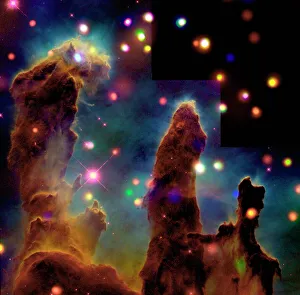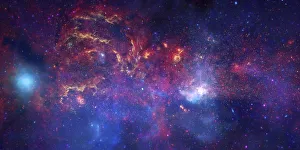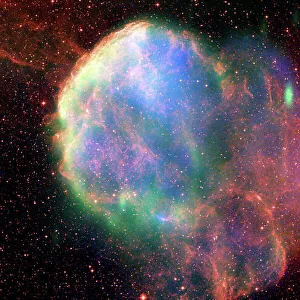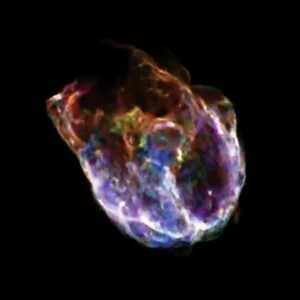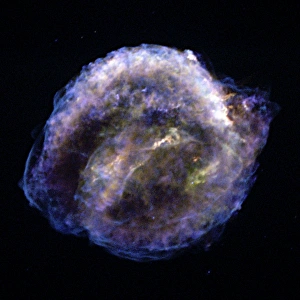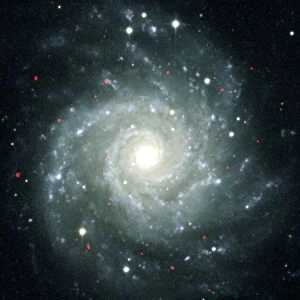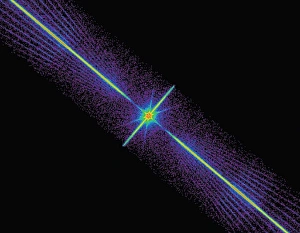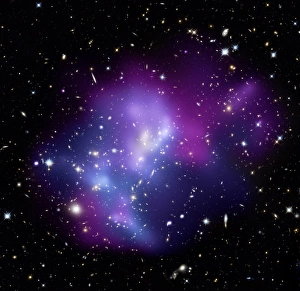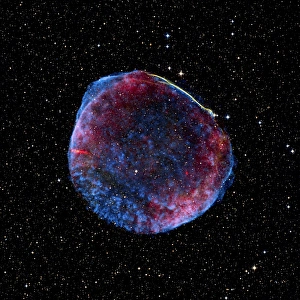Chandra Collection
Chandra is a project that has been in operation since 1999, and is an orbiting X-ray observatory
Choose a picture from our Chandra Collection for your Wall Art and Photo Gifts
30 items
All Professionally Made to Order for Quick Shipping
-
Chandra Collection
Chandra is a project that has been in operation since 1999, and is an orbiting X-ray observatory, designed to observe X-rays from high energy regions of the universe. Chandra has made many discoveries, including the first detection of black holes outside our Milky Way galaxy and evidence for dark matter and has also helped us understand how galaxies form and evolve, as well as how stars are born and die. Chandra's data has been used to study supernovae, neutron stars, quasars, active galactic nuclei and more. Its observations have provided insight into some of the most energetic phenomena in our universe. With its powerful instruments, Chandra continues to provide us with invaluable information about the cosmos around us.
+
Our beautiful pictures are available as Framed Prints, Photos, Wall Art and Photo Gifts
The Chandra collection from Media Storehouse offers a stunning array of wall art and framed prints that showcase the beauty and wonder of space exploration. Named after NASA's Chandra X-ray Observatory, our collection features breathtaking images captured by the telescope, including galaxies, nebulas, black holes, and more. The high-quality prints are available in a range of sizes to suit any space or decor style. Whether you're an astronomy enthusiast or simply appreciate beautiful artwork, the Chandra collection is sure to impress. Each print is expertly crafted using archival-grade materials to ensure long-lasting quality and vibrant colors. From colorful nebulae to intricate star formations, these prints offer a glimpse into the mysteries of our universe. With its stunning imagery and exceptional quality, the Chandra collection from Media Storehouse is perfect for anyone looking to add a touch of cosmic beauty to their home or office decor.
+
What are Chandra (Space Exploration Science) art prints?
Chandra art prints are stunning images captured by the Chandra X-ray Observatory, a space telescope launched in 1999. These prints showcase some of the most incredible and awe-inspiring phenomena in our universe, including black holes, supernovas, and galaxies. The Chandra X-ray Observatory is designed to detect high-energy X-rays emitted from these celestial objects that cannot be seen with traditional telescopes. The Chandra art prints available at Media Storehouse are high-quality reproductions of these breathtaking images. They are printed on premium paper using state-of-the-art printing technology to ensure exceptional color accuracy and sharpness. These art prints make perfect gifts for anyone interested in astronomy or science fiction enthusiasts who love to decorate their homes with beautiful imagery from outer space. Chandra art prints offer a unique opportunity to bring the wonders of our universe into your home or office and inspire curiosity about the mysteries beyond our planet.
+
What Chandra (Space Exploration Science) art prints can I buy from Media Storehouse?
We offer a wide range of Chandra Space Exploration Science art prints that are perfect for any space enthusiast or lover of astronomy. These prints showcase stunning images captured by the Chandra X-ray Observatory, which is one of NASA's most powerful telescopes. Some of the available Chandra art prints include breathtaking images of galaxies, nebulas, and supernovas. You can also find detailed close-ups of black holes and other celestial objects that are not visible to the naked eye. These high-quality prints are available in various sizes and formats, including canvas, framed print, poster print, and photographic print. Whether you're looking for a statement piece to hang on your living room wall or a smaller print to add to your collection, we have something for everyone. Each Chandra art print is carefully crafted using premium materials to ensure it lasts for years without fading or deteriorating. With so many beautiful options available at Media Storehouse, you're sure to find the perfect addition to your home decor or office space.
+
How do I buy Chandra (Space Exploration Science) art prints?
To purchase Chandra art prints from Media Storehouse, you can browse our collection of images online and select the ones you would like to purchase. Once you have chosen your desired prints, simply add them to your cart and proceed to checkout. During the checkout process, you will be prompted to enter your shipping information and payment details. We offer a wide selection of Chandra art prints featuring stunning images captured by NASA's Chandra X-ray Observatory. These high-quality prints are perfect for anyone interested in space exploration or astronomy. Whether you're looking for a unique piece of wall art for your home or office, or want to give a special gift to someone who loves science and space, we have an extensive range of Chandra art prints that are sure to impress. So why wait? Start exploring our collection today.
+
How much do Chandra (Space Exploration Science) art prints cost?
We offer a range of Chandra Space Exploration Science art prints that are available for purchase. The cost of these prints varies depending on the size and type of print you choose. We have a variety of sizes available from small to large, so there is something to suit every budget. Our Chandra Space Exploration Science art prints are printed using high-quality materials and techniques to ensure that they look stunning in any setting. Whether you're looking for a piece to hang in your home or office, our selection has something for everyone. We take pride in offering affordable prices without compromising on quality. Our goal is to provide customers with beautiful artwork that they can enjoy for years to come. If you're interested in purchasing one of our Chandra Space Exploration Science art prints, please visit our website or contact us directly for more information.
+
How will my Chandra (Space Exploration Science) art prints be delivered to me?
We take great care in delivering your Chandra art prints to you. We use high-quality packaging materials to ensure that your print arrives in perfect condition. Your print will be carefully rolled and placed into a sturdy cardboard tube for protection during transit. We work with trusted delivery partners who offer reliable and efficient services. Once your order has been dispatched, you will receive an email notification with tracking information so you can monitor the progress of your delivery. We are committed to providing our customers with the best possible service. If you have any questions or concerns about the delivery of your Chandra art prints, please do not hesitate to contact us and one of our friendly customer service representatives will be happy to assist you.





